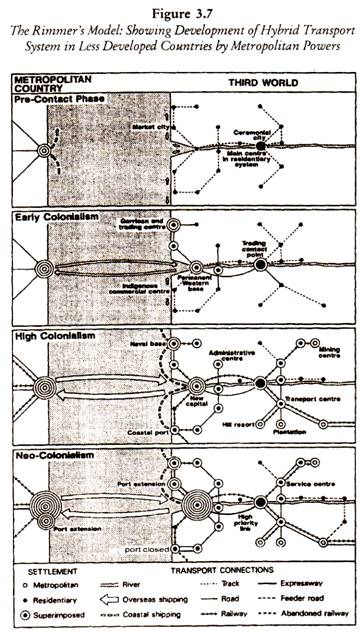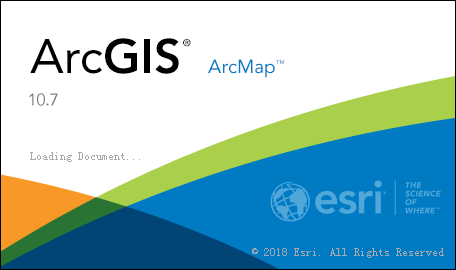The Rimmer Model of Transport Development
An alternative and complementary
perspective is provided by Rimmer (1977) who outlined
the development of a hybrid transport system in less-developed countries,
derived from
the colonization process by which metropolitan powers used revolutionary modes
ot
transport to penetrate indigenous systems and to gain both political control
and cultural
and economic dominance. The resultant restructuring of resource use, patterns
of circulation,
organization and outlook transformed the indigenous system, and instituted an
interdependen
relationship in which the colonizing power to a substantial extent controlled a
two-way
exchange of goods and services. This process eventually yielded a hybrid
transport system
in developing countries containing both indigenous and imported elements, often
inadequately integrated.
Using terminology derived from
Brookfield (1972, 1975), Rimmer identified four phases in the evolving
interrelationships between metropolitan and Third World countries in transport
terms (Figure 3.7).
1. A pre-contact phase involved
no links between a Third World country and a distant power in the advanced
world. Within the Third World country, a limited network of tracks, together
with navigable waterways, supported a relatively restricted socio-economic and
political system.
2. An early colonial phase,
secondly, involved the establishment of direct contacts by sea between
advanced and developing countries but did not produce radical changes in Third
World societies, Europeans being largely content to dominate sea transport
routes and to establish foothold settlements such as trading posts and garrisons.
3. A third phase of high
colonialism involved more fundamental changes including the introduction of
roads and railways, port facilities and inland transport nodes, and the
diversification of economic activity (including industrialization and
commercial agriculture) and settlement patterns (including rapid urbanization).
4. A fourth neo-colonial phase
involves a substantial further diversification of the economic development
surface of the Third World country and continuing (if modified) trade links with
the former metropolitan power. The modernization of the transport system in
the Third World country involves, at this stage, elements of rationalization,
adaptation and selective investment in response to changing demands. There is,
however, no radical adjustment to the systems inherited from earlier phases.
 |
| Rimmer's Model of Transport Geography |

Comments
Post a Comment